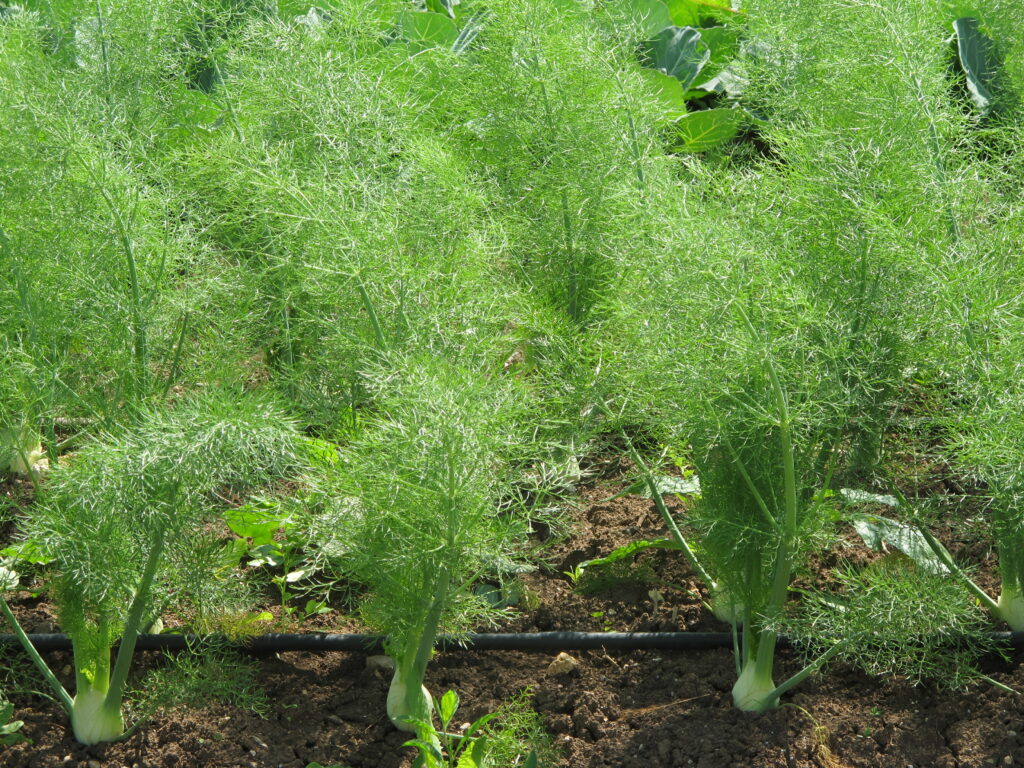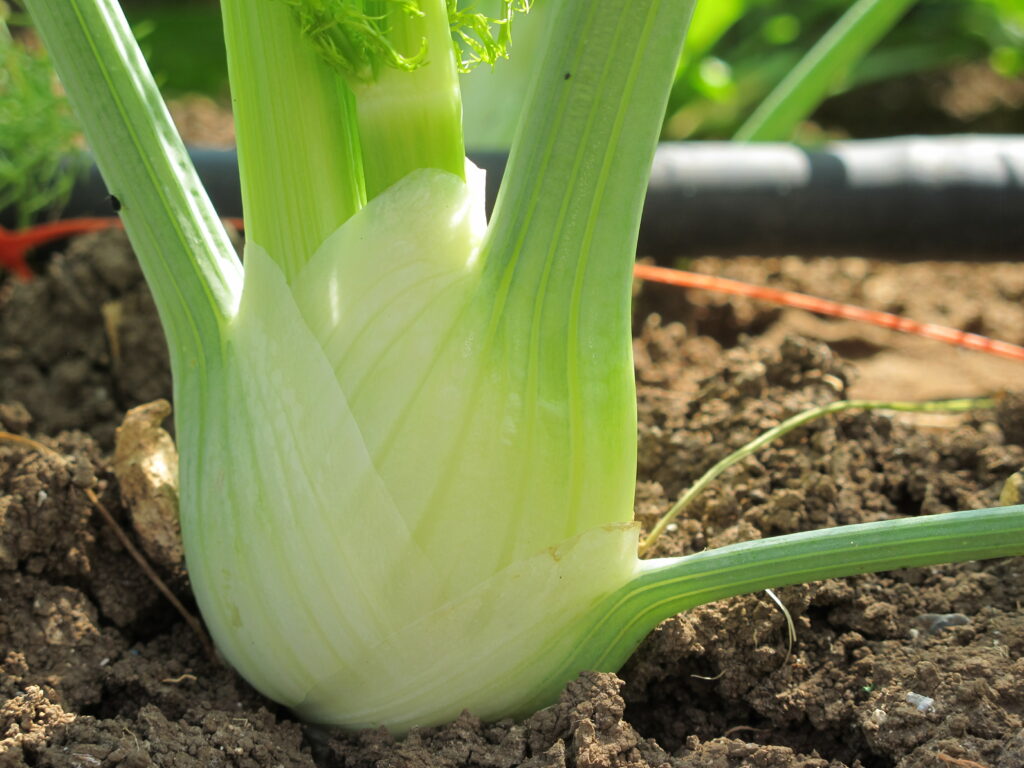Fennel Fun
In European mythology, the image of winter is that of a season in which everything dies and stops as growth halts or goes into slumber. This, of course, is due to the harsh, frigid winters of Northern Europe, and not at all relevant to the very lax, rainy winters of the Middle East and Israel (true, they’re cold, but not freezing), particularly considering the very tough, sweltering and devastating summers in these parts.
Here, at the beginning of winter, olive trees and dates as well as many citrus varieties are actually harvested. Goat farmers enjoy an abundance of quality milk from post-winter births, and even the beekeepers have it easier since after the dry summer, blooming commences and the bees resume their honey-making, free of the consuming need to survive. This past week we received a brand new stock of fresh winter products from all over the country: Tamir’s honey from Sha’al in the far north; olive oil from Hillel of Ein Harod in the Jezreel Valley, and dates from Gili of Kibbutz Samar in the south. The Meshek 42 team is resuming milking now that the goats have returned from “maternity leave,” and the milk is rich and delicious!
Our field is loving winter. True, we are dealing with frost, preparing for hail and making attempts to protect our greens from its damage. Yet the insects are not as harmful, partly because they go into a period of hibernation where they slow down a lot, but also because the plants are so healthy and vital. One look at the beds, bursting with green abundance and bountiful growth, and it is perfectly clear that Persephone is not in the underworld these days, but probably cooking a nice hot pot of vegetable soup for dinner.
One of Chubeza’s happy campers is our fennel, who wins the coveted Newsletter Vegetable of the Week designation. The beautiful photos of our field are courtesy of Chana Netzer (Thank you, Chana!)

Fennel belongs to the Umbelliferae family (called such because the flowers are arranged in a small, umbrella-like shape), a relative of the dill, coriander, carrot, parsley, celery, anise, cumin and others. The fennel’s origins are in the Mediterranean basin– a neighbor! As it is well-accustomed to our surroundings, fennel grows peacefully and comfortably in many wild fields, and easily overtakes abandoned agricultural plots or even the random urban open field. It understands our fickle weather, demands order from the weeds surrounding it, lest they encroach on its territory, and grows in the winter sun, sometimes reaching a height of two meters! The fennel is indeed a strong plant: it successfully endures weather changes, even extreme ones, and hardly ever suffers from pests, perhaps thanks to its strong scent. When it is big enough, fennel gets along well with the weeds, staking out a territory for itself. Its dominant character is a solid reason not to plant other plants alongside, and to give the fennel its own turf and garden-bed.
Contrary to other cultivated vegetables, the Florence fennel we grow is not very different from its brother, the wild fennel, except for the fact that it is shorter and puts most of its energy into thickening the leaves at its base until they become a sort of white bulb, sweet and juicy, which we can eat. Here too, it is a mistake to think we eat the root or onion of the fennel when in fact we’re eating its lower leaves, which in the case of the Florence fennel are puffy and fleshy. These leaves taste more delicate and sweet than the wild and common fennels, grown to extract seeds.
The aroma and distinctive taste come from a unique phytochemical, anethol, which is the main component of the volatile lubricant it contains (similar to anise). This phytochemical retards inflammation and reduces the threat of cancer. The volatile lubricant in fennel can also protect from various chemical toxins in the liver and other organs. Its strong smell can be used to refresh and prevent bad breath (if you appreciate its odor), and it is a component in most natural toothpastes. Those who do not enjoy the smell can identify with the pests who stay far away from the fennel, and with medieval witches, who were scared off by sheaves of fennel and St. John’s Wort hung on the thresholds during the June 24th agricultural summer festivities celebrated in Europe.
But let’s continue to sing its praises…… Plinius Secundas, otherwise known as Plini the Elder, an ancient Roman writer, wrote highly of the fennel. He attributed to it 22 medicinal qualities, including the fact that snakes eat it while shedding their skin and sharpen their sight by rubbing up against it. Fennel is considered an important medicinal plant, one of nine Anglo-Saxon sacred herbs (along with mugwort, plantain, watercress, betony, chamomile, nettle, crabapple and chervil). The oil is primarily in the seeds, which are a major component in Indian and Chinese blends. And a little more flattery: the fennel’s (its seeds, but not only) main claim to fame is as a digestive aid. In India it is served at the end of a meal (in Indian restaurants it comes with the bill, instead of sticky toffee) and chewed in order to help the food go down. Perhaps this is the reason fennel is considered to be a good diet supplement. The leafy bulb is rich in dietary fibers which in themselves contribute to efficient, healthy digestion. Fennel is also recommended for colicky babies. Even I drank the… hmmm, how shall I describe it… strong-tasting brew, composed of fennel seeds and anise stars, to help my babies out during colic times. Young mothers still willing to sacrifice themselves will be rewarded twofold: helping the baby and increasing their own milk. And if that still doesn’t help and the baby keeps screaming, a fennel drink will help his/her throat, relieving hoarseness and coughs…

But the fennel has a dark side as well (depending of course on the full or empty part of the cup…). It is one of the spices composing absinthe, a strong alcoholic liquor made of wormwood, moss, anise, Melissa and fennel. Absinthe’s anise-taste and green color give it the nickname “the green fairy.” Absinthe has been known to cause hallucinations (or to inspire the muse, depending on who you ask) and was very popular in the 19th century with bohemians and artists, with Van Gogh being one big aficionado. Some claim that he cut off his ear under the influence of absinthe.
But let’s forget about hallucinations for a minute, and take a deep breath. If you’ve decided to go out picking wild fennel flowers, you can add them to salad dressings, to soups and sauces. If you chop the flower very thinly (or use a mortar and pestle) and mix with soft butter, you can make a great spread for fish or grilled chicken. The flowers can also be used for décor. The seeds should be gathered immediately after the flowers have bloomed and withered and the seeds are still green and fresh.
TIPS: Fennel oxidizes upon contact with air: sliced fennel should be stored in the refrigerator in a container with water and a small amount of lemon juice. Our fennel bulbs come along with their branches and greens. Don’t dispose of them! Use the stems as a bed for grilled fish in a baking pan or to prepare brine. Use the delicate greens to flavor cheeses, sauces and butter. Place a fennel branch, for example, on fish as it bakes. The fennel will absorb the fishy odor and replace it with a fragrant fennel aroma instead. If you gather fennel flowers or seeds from wild plants, it is important to remember not to pick them from along the roadside. These flowers absorb toxins from automobile exhaust or from pesticide in weed sprays.
This week we don’t ask for much, only a nice wintery week for us all, and lots and lots of good rain. Shavua Tov, Alon, Bat Ami, Dror, Yochai and the Chubeza team
__________________________
WHAT’S IN THIS WEEK’S BOXES? Monday: Potatoes, coriander/parsley, tomatoes, mustard greens/ arugula/totsoi, scallions/onions, Swiss chard, cucumbers, sweet potatoes, carrots, radishes/fennel. Small boxes only: celery stalk/celeriac Large box, in addition: Kale/spinach, Jerusalem artichokes, broccoli/cabbage/beets, baby radishes
Wednesday: sweet potatoes, cucumbers, cilantro/parsley, Swiss chard/spinach, tomatoes, carrots, potatoes, arugula/Chinese cabbage/tatsoi, green or fresh onions, Jerusalem artichoke, small boxes only: beets/turnips/daikon/fennel.
Large box, in addition: Kale, broccoli/cabbage, baby radishes, celery/celeriac.
And there’s more! You can add to your basket a wide, delectable range of additional products from fine small producers: flour, fruits, honey, dates, almonds, garbanzo beans, crackers, probiotic foods, dried fruits and leathers, olive oil, bakery products and goat dairy too! You can learn more about each producer on the Chubeza website. On our order system there’s a detailed listing of the products and their cost, you can make an order online now!
